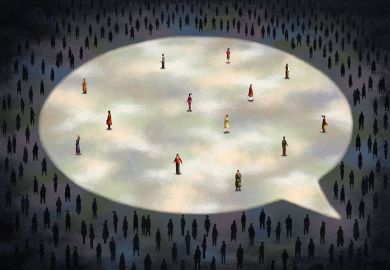One of the most useful concepts in recent literary theory is that of the implied reader. All writers hope for actual readers, but guiding them as they write is a concept of the reader they imagine they will have. The addresses to "dear reader" that populated the Victorian novel may be out of fashion, but an affective orientation towards an implied reader is built into all written texts. My difficulty with Harold Bloom's How to Read and Why is that Bloom does not seem to know whom he wants to address.
He apparently has two quite distinct audiences in mind. The book is polemically framed by a critique of the ways of reading literature taught in most university literature courses today. (His targets are specifically American, but the broad brush he is working with will tar many in Britain as well.) Bloom, as always, is great on the attack, and this aspect of How to Read and Why is excellent comedy, full of splenetic asides that will stimulate even when they may not meet agreement. He is convinced that there is something rotten in modern English departments, and he is eloquent and memorable in his attempt to get to the bottom of the problem. However, these scattered remarks or sustained asides form only a small fraction of the book. The rest is composed of long quotations and discussions of a set of passages from works that Bloom considers touchstones of excellence, after which he explains how and why we should read these passages. Hamlet turns into Polonius here, and the effect is unsettling.
It is inevitable that what Bloom has to say in these discussions is not deeply original or surprising: he is appealing to a common reader and he needs to connect with that reader. But any reader who finds value and interest in Bloom's discussion of the merits of Chekhov's short fiction will not, in my judgement, be close enough to the battlegrounds of literary theory to find his polemical discussions intelligible. Or, from the other side, any reader who finds the polemic of interest -even if not agreeing with it -will not find most of the book very interesting because it is so introductory and general. Why, therefore, did Bloom think he should put these two discussions together?
An unfriendly answer would be to locate the reason in the contingencies of the American educational scene. Critics hostile to the position advocated by Bloom have also advanced both a critique of the literary canon as taught in American universities and a critique of the very idea of a canon. This answer gains traction when one notices that aside from a nod in the direction of Ralph Ellison and Toni Morrison, Bloom discusses (and so puts in his canon) only writers who are white Europeans or Americans of the past half-millennium. Surely, the argument runs, Lady Murasaki deserves a place here if Ernest Hemingway does, and Bloom's selection of writers to canonise cannot be seen as innocent, as empty of political considerations. Bloom leaves himself wide open to this response, and I cannot disagree with it. However, I do not think that this critique -call it multiculturalist if one wants or the cant of the day, as Bloom himself would call it - necessarily entails all the baggage that commonly accompanies it.
Bloom wants to save two key concepts, and I agree with him on both counts. One is the concept of the masterpiece, that some works are greater than others in their capacity to attract sustained attention from readers across space and time; and he sharply disagrees with the current notion that aesthetic value does not exist and that the judgement that something is a masterpiece is solely a reflection of the political, social and cultural values of the writer, text or reader.
The other concept is that of the common reader, that people outside university literature classes do read and that their interest in literature should be valued. (Casual ethnographic research on the Tube in London suggests that neither concept is in as much peril in Britain as in the United States.) Bloom wants to reach out to these common readers and, so to speak, inoculate them against the literary theory that might otherwise convince them that they should not bother to seek "the best that has been thought and said".
It is a pity therefore that Bloom makes himself such easy game for his opponents by presenting such a "Eurocentric" cast of great books. The common reader Bloom addresses should find Things Fall Apart , The Ramayana and The Tale of Genji at least as interesting as Hemingway's "Hills Like White Elephants" or Flannery O'Connor's A Good Man Is Hard to Find ; I personally find them a good deal more interesting.
Had Bloom come up with a less parochial list of great writers (Dante, Horace, and Homer might be good additions as well), he would be less easily dismissed. For in some key respects, he is right: literary studies in the academy (especially in the US but also in Britain) are farther away from non-academic readers who love great literature than they were a generation ago, and this distance has a cost. I am with Bloom when he asserts that there are masterpieces that will last; I am not with him on many of the specifics of his list.
Reed Way Dasenbrock is professor of English, New Mexico State University, United States.
How to Read and Why
Author - Harold Bloom
ISBN - 1 84115 038 X
Publisher - Fourth Estate
Price - £15.99
Pages - 283



